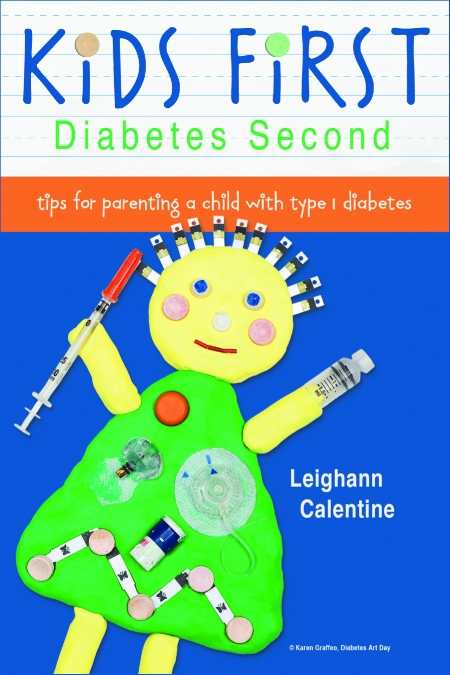Kids First, Diabetes Second
Tips for Parenting a Child with Type I Diabetes
Each year, more than fifteen thousand children in the US are diagnosed with type 1 diabetes. In that moment, their lives—and their parents’ lives—are changed forever. Diabetes affects all organ systems and can cause blindness, loss of appendages, kidney failure, and death. Parents of juvenile diabetics must be constantly vigilant, checking carbohydrate intake and blood-sugar levels and injecting insulin multiple times day and night. They must make daily life-and-death decisions, and they must train every person and organization that comes in contact with their child. Leighann Calentine’s Kids First, Diabetes Second: Tips for Parenting a Child With Type 1 Diabetes is just what the doctor ordered for parents of juvenile diabetics. It is a comprehensive, yet accessible, guide to raising a young child afflicted with this life-threatening disease.
In 2010, two years after her three-year-old daughter was diagnosed with type 1 diabetes, Calentine launched D-Mom Blog: The Sweet Life with a Diabetic Child (dmom.com). Since then, she has served as a national expert and mentor on the topic of parenting children with diabetes, including serving as an invited participant in Johnson & Johnson’s Camp Baby.
Kids First, Diabetes Second is practically organized and well written. It covers diagnosis, understanding the disease and its effects, daily treatment regimens and supplies, handling sick days, and working with school personnel, family, and friends. Calentine’s mantra—make life as normal as possible—permeates each piece of advice she gives. “Give a choice where there is a choice to be given, but not taking care of diabetes is never a choice,” she cautions. “What’s worse: letting your child have candy or dessert once in a while with your knowledge or creating a scenario where your child feels the need to sneak certain foods?”
Calentine describes how to organize information in binders for quick reference, which supplies to keep in emergency kits, how to calculate the carbohydrates in recipes, which foods to keep on hand for hyper- and hypoglycemic episodes, the advantages and disadvantages of various insulin delivery systems, and how to deal with specific supplies. “Cold long-acting insulin burns, but at room temperature it burns less … [R]oll it between your hands to quickly warm it.”
Her advice on dealing with schools and organizations, holidays, celebrations, and sports participation is excellent: ensure that someone on staff has been trained as a diabetes expert; create informational binders for the principal, teachers, school nurse, and other relevant personnel; train each person to administer insulin and to recognize the symptoms of hypo- and hyperglycemia. The key, she says, is to let the child “have fun and keep diabetes from taking center stage.” But do homework ahead of time: meet with personnel before the school year begins, visit park websites and e-mail or call their guest services office to discuss accommodations for children with diabetes.
Kids First, Diabetes Second is a detailed, easy-to-read, and comprehensive guide. This no-nonsense treasure trove belongs in the household of every parent of a child with juvenile diabetes—not stashed away on a dusty bookshelf, but in a purse or backpack, always within easy reach.
Reviewed by
Nancy Walker
Disclosure: This article is not an endorsement, but a review. The publisher of this book provided free copies of the book to have their book reviewed by a professional reviewer. No fee was paid by the publisher for this review. Foreword Reviews only recommends books that we love. Foreword Magazine, Inc. is disclosing this in accordance with the Federal Trade Commission’s 16 CFR, Part 255.

